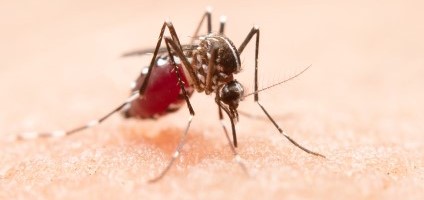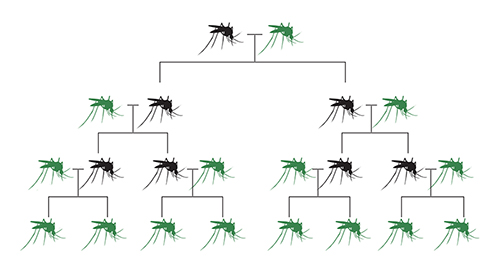THE AFRICAN GENETIC BIOCONTROL CONSORTIUM
Genetic Biocontrol
Definition of Genetic Biocontrol
Biocontrol, short for biological control, is a method of using living organisms, often microbes or insects, to manage pests or disease-causing pathogens. Biocontrol has a long-standing history of use for insect pest management, including by releasing sterile insects to reduce or eliminate wild populations of that insect. Genetic biocontrol approaches use genetic engineering to implement or supplement biocontrol.
There are many possible applications of genetic biocontrol across public health, agriculture, and conservation. For example, genetic biocontrol can be used to reduce the reproductive capacity of undesirable insects in the wild. Genetic biocontrol also could potentially be used to prevent insects from acquiring or transmitting a disease, which could help to protect human, livestock and wildlife health. In the area of public health, there is evidence from laboratory experiments that genetic biocontrol approaches can reduce populations of disease-carrying mosquitoes. Genetic biocontrol strategy is also applicable in removal of invasive species such as rodents on islands, which are responsible for extinctions, biodiversity loss, or transmission of dangerous diseases to humans such as plagues.

PUBLIC HEALTH
By suppressing or eliminating insects responsible for causing vector-borne diseases such as malaria.



CONSERVATION
By removing non-native invasive species to prevent extinction.



AGRICULTURE
By reducing or eliminating invasive plant or insect species affecting agricultural productivity.
What are GeneDrives?
Some possible genetic biocontrol approaches are gene drive approaches. GeneDrive is a natural phenomenon that promotes or favors the inheritance of certain genes from generation to generation. Synthetic, or engineered, forms of gene drive that mimic naturally occurring forms can be developed using techniques of molecular biology. For example, if there is a set of genes that prevents an insect from acquiring or spreading a disease, a gene drive approach may be able to spread those genes into a wild population of that insect. Gene drive approaches may also be able to spread genes that decrease the size of a wild population of an insect that spreads diseases. Gene drive could help to make genetic biocontrol more widely accessible and cost-effective.



Given the current state of research, it is likely that the first potential use of gene drive approaches could be to support control and elimination of malaria in Africa. Decision making about the benefits and risks of gene drive approaches must be led by those who would be most directly impacted by their use. Because gene drive approaches would make changes to wild populations of disease-carrying mosquitoes, their potential use is relevant to a wide range of stakeholders.
Many organizations in Africa are already engaged in capacity strengthening and knowledge sharing to support informed decision-making on applications of genetic biocontrol including gene drive approaches. However, these discussions will benefit from input by organizations representing a broader range of expertise that we envisage to establish through the Consortium.
Understanding Genetic Biocontrol is just a click away.


